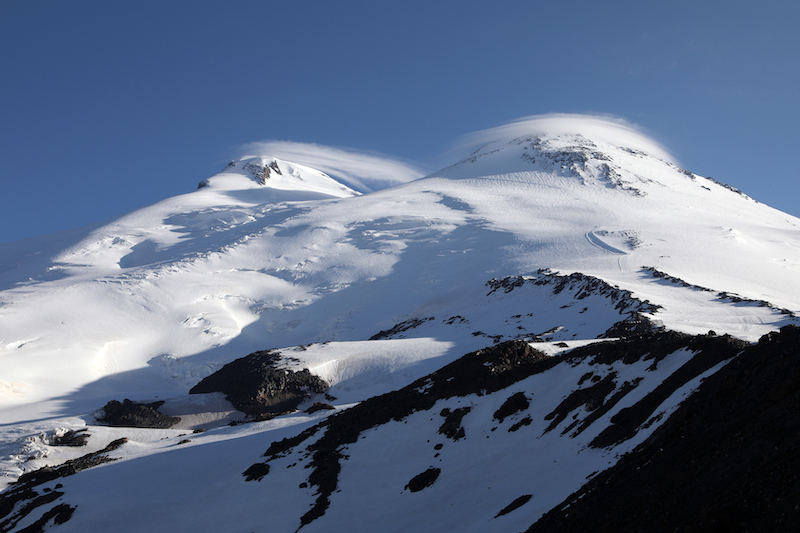Elbrus, Caucasus / Russia
June 2018

2 ice cores
150 and 120 m lenght
> 500 years of planet history
Team
Vladimir Mikhalenko, Stanislav Kutuzov (Coordinators - Institute of Geography, Moscow), Ivan Lavrentiev (Institute of Geography, Moscow), Andrey Smirnov, Pavel Toropov (Lomonosov Moscow State University), Nelly Elagina (Institute of Geography, Moscow), Anna Kozachek (Arctic and Antarctic Research Institute, St. Petersburg), Sarah Del Ben (Wild-Touch Film Director, France).Glacier
Europe’s largest ice-covered volcanic massif (5,642 m), Elbrus is located in the Caucasus Mountains in southern Russia. With an area of around 115 km2 completely covered by ice, Elbrus’ glacial system contains more than 10% of the total volume of ice in Greater Caucasus. The Baksan, Kuban and Malka rivers flow from the Elbrus glacier, irrigating the agricultural land and plains of the North Caucasus.Due to its altitude of more than 5,000 m, the ice is not deteriorating for the moment. Elbrus is one of the only glaciers in Europe where the climate information contained within the ice is still intact. The results of the first drilling expedition (2009) showed that the ice cores taken from Elbrus could provide unique information on several key aspects of changes in the environment, air pollution and volcanic activity.
The continuous records within an ice core from Elbrus could cover a period of 500 years. However, the reduction in the size of the glacier has increased substantially in the last few decades. That is why it was so urgent to protect this invaluable environmental archive.
Results
Two ice cores were extracted: one measuring 150 m and the other 120 m. The extremely difficult weather conditions, unusual for this season, meant that, even after more than five weeks, an ice core of 250 m down to bedrock could not be extracted.Initial analysis will be carried out at the Institute of Geography (Russian Academy of Sciences, Moscow)..
Press release announcing mission
Updated on October 30, 2023

